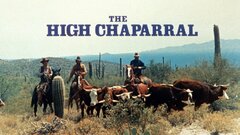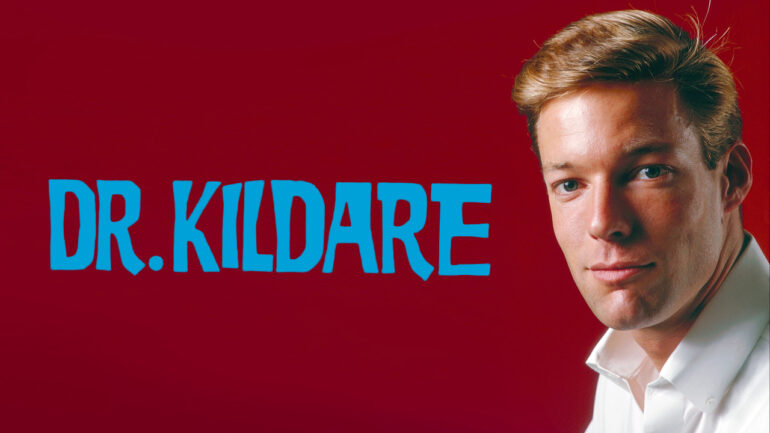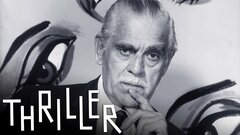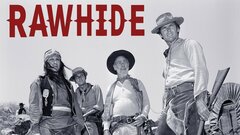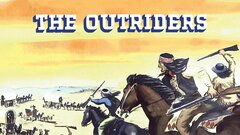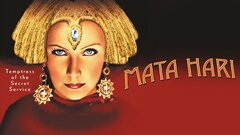An engaging Latin American vaudevillian and singer who began his film career during the silent era, actor Ramón Novarro took over the role of Hollywood's top Latin Lover when Rudolph Valentino died in 1926, only to stagnate once talkies came of age. Novarro first came to prominence as a villainous henchman in "The Prisoner of Zenda" (1922), which led to starring roles in popular films like "Scaramouche" (1923) and "The Arab" (1924).
He had his greatest success playing wealthy man-turned slave Judah Ben-Hur in "Ben-Hur: A Tale of Christ" (1925), a troubled, but successful epic that served as a precursor to William Wyler's 1959 classic. From there, Novarro starred opposite Norma Shearer in "The Student Prince in Old Heidelberg" (1927) and Joan Crawford in "Across to Singapore" (1928). But once he made the transition to talkies after "Devil May Care" (1929), Novarro saw his popularity plummet.
By the end of the decade, he was out of a contract and lucky to find work in bit parts or character roles. Meanwhile, he fell into alcoholism - due in part to his lifelong struggle with his homosexuality - and his career suffered even more. Novarro did have a bit of a revival with character work on popular TV series like Dr. Kildare" (NBC, 1961-66) and "Bonanza" (NBC, 1959-1973), but his murder in 1968 by two prostitute brothers ended his life in a tawdry fashion.
Born Jose Ramon Gil Samaniegos on Feb. 6, 1899 in Durango, Mexico, Novarro was the oldest of 13 children born to his dentist father and homemaker mother, though four siblings wound up dying in childhood. In 1913, however, his family moved to Los Angeles in order to escape the Mexican Revolution following a move to Mexico City and back to Durango.
Struck by the film industry, Novarro began landing uncredited bit parts in silent films like "The Hostage" (1917), "The Little American" (1917) and "Joan the Woman" (1917) while earning a living as a singing waiter. He received one of his first credits in "A Small Town Idol" (1921), in which he played a dancer, while remaining off the credit list for "The Concert" (1921), "The Four Horsemen of the Apocalypse" (1921) and "Man-Woman-Marriage" (1921). Novarro finally rose to stardom on the strength of his turn as the villainous Rupert of Hentzau in "The Prisoner of Zenda" (1922), an epic-scale swashbuckling adventure based on the popular Anthony Hope novel of the same name.
After signing a contract with Metro Pictures Corporation - later to become Metro-Goldwyn-Mayer - Novarro began starring as all-American heroes in films like "Scaramouche" (1923), "Where the Rainbow Ends" (1923), "The Arab" (1924) and "The Midshipman" (1925). He next starred in the first of his two great successes, "Ben-Hur: A Tale of Christ" (1925), where he played the wealthy Judah Ben-Hur, who is arrested and sold into slavery by his corrupted best friend (Francis X. Bushman).
Though William Wyler's 1959 epic remains the best known version of Lew Wallace's acclaimed novel, this adaptation - the second following one made in 1907 - remains every bit as grand as its predecessor, especially given the fact that it was the most expensive silent film ever made at the time. Numerous logistical problems plagued the production, not the least of which was a change in directors and recasting the lead, which was originally supposed to be star George Walsh as Ben-Hur. The film featured two outstanding set pieces - an epic seat battle and the famed chariot race, which was nearly duplicated in 1959 - but was later bogged down by a rather humdrum storyline.
Regardless of its unevenness, Ben-Hur lived on as Novarro's most shining moment. Following the tragically premature death of Rudolph Valentino in 1926, Novarro became Hollywood's top so-called Latin Lover and went on to become one of the great romantic actors of his day. He starred opposite Norma Shearer in Ernst Lubitsch's finest silent film, "The Student Prince in Old Heidelberg" (1927), in which he played a carousing monarch who falls for a barmaid (Shearer).
From there, he starred opposite Joan Crawford in the adventure melodrama "Across to Singapore" (1928) and made a rare comedy with "A Certain Young Man" (1928). Following leading roles in the last of his silent films, "Across to Singapore" (1928) and "The Flying Fleet" (1929), Novarro made the transition to talkies with "Devil May Care" (1929), which should have been accomplished with ease because of his trained tenor voice. But for some reason, his early sound films like "Call of the Flesh" (1930), "In Gay Madrid" (1930), "Son of India" (1931) and "Daybreak" (1931) were uninspired.
After "The Son-Daughter" (1932) with Helen Hayes and "The Huddle" (1932) directed by Sam Wood, Novarro co-starred in perhaps his best talkie, "Mata Hari" (1932), though he did little more than gaze longingly at Great Garbo. Unable to translate his silent stardom into the sound era, Novarro began to fade after "The Barbarian" (1933) co-starring Myrna Loy, the backstage musical comedy "The Cat and the Fiddle" (1934) and "Laughing Boy" (1934) with Lupe Velez.
In 1935, his contract with MGM expired and the studio did not renew. Looking for some way to revive his flagging career, Novarro began making pictures with Republic Pictures like "The Sheik Steps Out" (1937) and "A Desperate Adventure" (1938), but failed to return to his days of glory. But by this point, Novarro had developed a drinking problem that stemmed from his lifelong conflict between his strict Roman Catholic upbringing and his homosexuality.
Over the years, he kept his sexuality very much a secret and was uncomfortable talking about it even with those who knew. Over the years, he had secret relationships with journalist and publicist Herbert Howe and adventurer Richard Halliburton, and reportedly refused to enter into a fake marriage as requested by MGM head Louis B. Mayer. Meanwhile, Novarro struggled to find film roles later in his career and resorted to a handful of supporting parts in the Mexican-made drama "The Saint that Forged the Country" (1942), "When We Were Strangers" (1949) with Jennifer Jones, and the film noir staring Robert Mitchum, "The Big Steal" (1949).
Despite being one of the more popular member of the Hollywood community, Novarro nonetheless fell on hard times and struggled to find work, accepting bit parts and character work in the Western "The Outriders" (1950) and the thriller "Crisis" (1950) staring Cary Grant. In the late 1950s, he turned to television with episodes of "Walt Disney Presents" (ABC, 1954-1961) and returned to film as a menacing banker in George Cukor's rather ordinary Western "Heller in Pink Tights" (1960), staring Sophia Loren and Anthony Quinn.
Despite his lack of film roles, Novarro was financially secure and lived as a recluse for the rest of his life, while occasionally appearing on the small screen in episodes of "Dr. Kildare" (NBC, 1961-66), "Combat!" (ABC, 1962-67), "Bonanza" (NBC, 1959-1973) and "The Wild Wild West" (CBS, 1965-69). On Oct. 30, 1968, following his last onscreen appearance on the Western series "The High Chaparral" (NBC, 1967-1971), Novarro was murdered by two brothers, Paul and Tom Ferguson, whom he invited to his home and paid to have sex.
The brothers thought he kept a large sum of money hidden in the house and tortured the actor to uncover its whereabouts. Novarro assured them there was no such money, leading to a prolonged beating that ended with the Fergusons leading the house with just $20. Ramón Novarro died from asphyxiation as a result of choking on his own blood. By Shawn Dwyer
